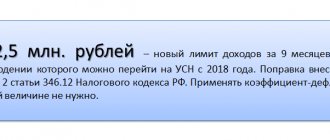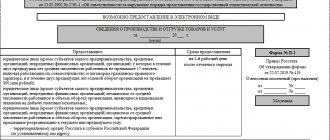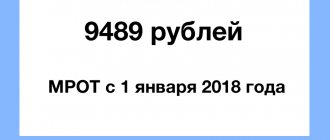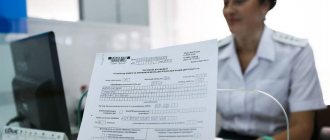During 2022, you need to submit your VAT return four times. The first will be the report for the 4th quarter of 2022 - it must be submitted by January 25. All other reports are for 2022, including for the first quarter - until April 26, for the second quarter - no later than July 26, and for the third quarter - until October 25. Submit your declaration for the 4th quarter in 2022 - before January 25. The declaration changed in the summer of 2022 - the new form will be valid from the report for the 3rd quarter of 2022. We will tell you who, when and where should submit the declaration, what the consequences of failure to submit the document are, and we will give an example of how to fill it out.
Who submits a VAT return and how?
Submit your VAT return using the Kontur.Accounting web service.
The system itself will generate a declaration based on primary documents and check it before sending. Get free access for 14 days
All value added tax payers submit this declaration. It is also submitted by importers, VAT non-payers who issued a VAT invoice in the past quarter, and tax agents who received or issued invoices as intermediaries, even if they work in special modes.
All these categories submit the declaration electronically. If you submit a document on paper, the tax office will consider this tantamount to failure to submit a return. On paper, a document can only be submitted to certain tax agents (clause 3, 12, article 80, clause 5, article 174 of the Tax Code of the Russian Federation).
If you did not conduct any activity during the reporting period or did not have taxable objects, you will still have to submit a declaration, but in zero form. Sometimes, instead of a VAT return, you can submit a single tax return. This is possible if you did not conduct business during the quarter, and there was no cash flow in your accounts and cash register.
Declaration form
Federal Tax Service Order No. МВ-7-3/ [email protected] dated October 29, 2014, as amended by Order No. ED-7-3/ [email protected] dated March 26, 2021, approved instructions on how to fill out a new VAT return form for the 4th quarter of 2022 , - taking into account the changes made.
The current form consists of a title page and 12 sections. It is necessary to fill out only the first sheet and section 1. The remaining parts of the value added tax tax return are completed if the necessary conditions are met.
IMPORTANT!
Since 2014, taxpayers and tax agents have been filing returns electronically. Previously, the report was submitted on paper if the number of employees did not exceed 100 people. You can no longer use this opportunity and you won’t be able to fill out a VAT return in Excel - it won’t be accepted.
But in special cases, paper reports on value added tax are still submitted. It is possible to prepare a VAT return in paper form:
- for foreign taxpayers who pay the “Google tax”;
- for tax agents who are non-payers of VAT (special regimes) or who have received an exemption from paying it, if the following conditions are simultaneously met: they are not the largest taxpayers;
- the number of employees is not more than 100;
- they did not issue VAT invoices;
- did not act as an agent on their own behalf.
It is possible to obtain an exemption from the obligation to pay tax if, over the previous three months, sales revenue does not exceed 2 million rubles.
Where and when do we submit the declaration?
The declaration is generally submitted within 25 days after the end of the quarter. In 2022, the deadlines are as follows:
- for the 4th quarter of 2022 - until January 25, 2021;
- for the 1st quarter of 2022 - until April 26;
- for the 2nd quarter of 2022 - until July 26;
- for the 3rd quarter of 2022 - until October 25.
The date shift is due to the fact that the 25th falls on a weekend. For example, the report for the 1st quarter of 2022 must be submitted by April 25 inclusive, but this is Sunday. Therefore, the last day for delivery is Monday.
Declarations are sent to the tax authority at the place of registration. If you have separate divisions, you must submit the declaration centrally to the Federal Tax Service, with which the parent organization is registered. The largest taxpayers submit a declaration to the tax authority at the place of registration as the largest taxpayer.
Responsibility for failure to submit a declaration
For late filing of a return, the tax office may hold a company or entrepreneur liable. First of all, this is a fine: its amount will be 5% of the tax payable. The fine is imposed for each full or partial month, starting from the last deadline for submitting the declaration. The fine will not exceed 30% of the tax amount, but will not fall below 1000 rubles.
That is, for being late with the declaration you will pay 1000 rubles or more. Most likely, a fine will be imposed even if the zero declaration is sent untimely. There is no consensus on this issue, but in practice the tax service fines for late payments, and the courts support it. Although there are also opposite court decisions, when companies that are late with “zero” are exempt from fines, there are fewer of them.
Also, the Federal Tax Service may suspend transactions on bank accounts for failure to submit a declaration 20 working days after the deadline for submitting the document. In addition, the tax office will notify the taxpayer about this 14 days before making a decision to suspend transactions on accounts.
See the form for the new VAT return 2021
From July 1, the Federal Tax Service has the right to recognize declarations as unsubmitted. This will happen if during a desk audit one of the circumstances becomes clear (Article 80 of the Tax Code of the Russian Federation):
- signature by an unauthorized person;
- signature of the disqualified individual;
- signature of the deceased individual;
- signature of the person about whom there is a mark indicating unreliability of information;
- signature of a person who, according to the Unified State Register of Legal Entities, has ceased to exist;
- violation of control ratios approved by order of the Federal Tax Service dated May 25, 2021 No. ED-7-15/ [email protected]
In these cases, the tax office will send a notification that the declaration is considered unsubmitted. If control ratios are violated, she will report no later than the next business day, and in other cases - within five days from the moment the circumstances are identified.
After receiving a notice of non-filing due to a violation of the control ratios, the taxpayer has five days to correct the errors. If you meet the deadline, the tax office will consider that you reported on the day when you submitted the first declaration, which was recognized as unsubmitted - there will be no delay.
VAT liability
If the company does not transfer the VAT amount within the established time frame, the tax office, on the basis of Art. 122 of the Tax Code of the Russian Federation will issue a fine in the amount of 20% of the amount of unpaid tax. The fine will be doubled (40% of the unpaid tax) if the tax authorities prove that the taxpayer did not pay VAT intentionally.
For late filing of a VAT return, there is also a fine (Article 119 of the Tax Code of the Russian Federation) in the amount of 5% of the tax amount on the return for each full and partial calendar month of delay. In this case, the minimum fine is 1,000 rubles, and the maximum is 30% of the tax amount.
Still have questions? Order a free consultation with our specialists!
Did you like the article?
Want to receive articles like this every Thursday? Keep abreast of changes in legislation? Subscribe to our newsletter
Deductions in the declaration
Submit your VAT return using the Kontur.Accounting web service. The system itself will generate a declaration based on primary documents and check it before sending. Get free access for 14 days
Deductions help reduce your tax bill. There are several types of VAT deductions, they are listed in Art. 171 Tax Code of the Russian Federation. The amounts of VAT to be deducted are reflected in lines 120-190 of section 3 of the VAT return. In lines 120-185, the deduction is distributed by type, and in line 190, the total deduction for the quarter is calculated. In total, the declaration identifies 9 types of deductions. Their total amount is subtracted from the total amount of calculated tax and thus determines the VAT to be paid or refunded.
The safe percentage of VAT deductions for third quarter reporting has changed. If the share of deductions is higher than average, there is a risk of being monitored. The national average deduction rate in 2022 is 89%. In practice, many tax authorities focus not on all-Russian, but on regional indicators. Check them on the Federal Tax Service website. Nothing prevents you from taking a larger deduction if there is a reason to do so. But if a company’s deductions do not correspond to the average deductions in the region, inspectors can call “on the carpet” and schedule inspections - even on-site inspections.
We talked more about calculating the safe share of deductions in the article “Safe share of VAT deductions.”
What's new in 2022
The Federal Tax Service made changes to the VAT return by order dated March 26, 2021 N ED-7-3/ [email protected] The new form will become effective from the report for the third quarter of 2022. For most taxpayers, nothing important has changed, but everyone should use the new form. The changes concern the launch of a product traceability system.
The barcodes in the declaration were changed and sections 8, 9, 10 and 11 were clarified - lines were added to them to reflect transactions with traceable goods. The essence of the changes in all sections is the same, only the line numbers differ. Let's look at the example of section 8:
- line 150 for the customs declaration number was removed;
- added line 200 for the registration number of the goods declaration or the registration number of the batch of goods (RNPT) subject to traceability;
- added line 210 for the unit of measure code of the traceable item;
- added line 220 for the quantity of the traceable item in the specified unit of measurement;
- added line 230 for the cost of the tracked item, excluding VAT in rubles.
Similar lines 221-224 were added to section 9, lines 220-250 to section 10, and lines 210-240 to section 11.
What sections does the declaration consist of?
The declaration includes a title page and 12 sections. Figure out which sections you need to fill out. If filling out a declaration raises many questions and difficulties, seek help from an experienced accountant or keep records in a convenient accounting service that will generate all reports and check them before sending them to the tax office and funds. This is relevant for most VAT payers and intermediaries who send the document to the tax office only in electronic form.
Filling out the declaration:
- the title page and 1 section are filled out by all VAT payers;
- Section 2 is filled out by tax agents separately for each company for which there are tax agent responsibilities;
- Section 3 - for calculating the tax base and tax payable at non-zero rates;
- Sections 4, 5 and 6 are completed by exporters;
- Section 7 - for companies that carried out VAT-free transactions in the previous quarter;
- Section 8 is the purchase ledger data, that is, data on received invoices;
- Section 9 - sales book data, that is, data on issued invoices;
- Section 10 for intermediaries - you need to provide information from the journal of issued invoices;
- Section 11 for intermediaries - information from the log of received invoices;
- Section 12 is filled out by those who are exempt from VAT or who carry out non-taxable transactions, for example, simplifiers and UTII payers who issue invoices with VAT.
In general, the declaration contains a title page and sections 1, 3, 8 and 9.
Filling out the VAT return
In 2022, you will need to fill out the VAT return on an updated form. The Federal Tax Service has once again made changes to the report form. In particular, barcodes and section 1 have been updated. The list of transaction codes not subject to VAT has also been adjusted. The updated form must be used starting with the report for the first quarter of 2022 (Order of the Federal Tax Service of the Russian Federation dated December 24, 2021 No. ED-7-3/1149).
As a rule, a VAT return is generated in an accounting program based on the data reflected in the following documents:
- purchase book and sales book. Indicate information from these VAT registers in sections 8 and 9 of the declaration;
- invoice journal. Indicate information from the journal in sections 10 and 11 of the declaration. This applies to VAT payers and tax agents who conduct intermediary activities in the interests of other persons;
- invoices. Indicate information from invoices issued to customers in section 12 of the declaration. This rule applies to those who do not have to pay VAT, but issue invoices with the tax amount allocated. For example, simplifiers (clause 5 of Article 173 of the Tax Code of the Russian Federation).
In addition, to fill out the VAT return, information from the accounting and tax registers is used.
All taxpayers and tax agents must include in their return:
- title page;
- Section 1 “The amount of tax subject to payment to the budget (reimbursement from the budget), according to the taxpayer.”
Most VAT payers include in their declaration:
- section 3;
- sections 8 and 9;
- appendices 1 to sections 8 and 9;
- section 12.
Organizations that are not VAT payers or tax agents, but issue invoices with allocated tax, fill out:
- title page;
- Section 1 “The amount of tax subject to payment to the budget (reimbursement from the budget), according to the taxpayer”;
- section 12.
This follows from paragraph 5 of paragraph 3 of Section I and paragraph 51 of Section XIV of the procedure for filling out the declaration (approved by Order of the Federal Tax Service of the Russian Federation dated October 29, 2014 No. ММВ-7-3 / [email protected] ).
In sections 1–7, indicate all cost indicators in full rubles, and in sections 8–12 - in rubles and kopecks (clause 15 of the procedure for filling out the declaration).
Start filling out the declaration with sections 8 and 9. Then create the remaining applications and sections. The composition of the sheets that need to be included in the declaration depends on who submits it and what kind of transactions occurred. Lastly, fill out the title page, as it needs to indicate the number of pages of the declaration.
Other sections of the report and lines must be completed if the company performed certain transactions during the tax period. Thus, sections 4–6 are completed if transactions were carried out that were subject to VAT at a rate of 0 percent. And section 7 - if the organization carried out transactions exempt from taxation, or received advances for the supply of products with a long production cycle.
In 2022, the VAT declaration is drawn up according to the updated form and format, which are provided for in Order of the Federal Tax Service of the Russian Federation dated October 29, 2014 No. ММВ-7-3/558.
Instructions for filling
Here is a sample of filling out a declaration for Romashka LLC - this is a micro-enterprise with two employees at OSNO, the main activity is wholesale trade. The organization fills out only part of the sections of the declaration:
- “Romashka” is not a tax agent, therefore it does not fill out section 2;
- does not apply a 0% tax rate, therefore does not complete sections 4, 5 and 6;
- does not deal with operations that are not subject to taxation or are carried out outside the territory of Russia, and also does not make an advance payment for the supply of goods with a manufacturing cycle of more than six months, therefore does not fill out section 7;
- is not an intermediary and does not receive VAT exemption.
Title page
On the title page we indicate the TIN and KPP, tax authority code, reporting year 2022 (2021) and reporting period - “21” for the 1st quarter, “22” for the 2nd quarter, “23” for the 3rd quarter and “24” for the 4th th quarter. We write the name of the organization in full, indicate the telephone number, the number of sheets in the declaration and the details of the director or entrepreneur.
From the report for the 4th quarter of 2022, the line “Code of the type of economic activity according to the OKVED classifier” was removed from the title page. There is nothing special about this, they just removed duplication of data. The tax office already knows the types of activities of companies, because during registration they are indicated in documents and entered into the Unified State Register of Legal Entities/Unified State Register of Individual Entrepreneurs. You no longer need to indicate OKVED.
Section 1
In section 1 we indicate the OKTMO code and the budget classification code. The BCC depends on the type of transaction for which tax is paid. Sales tax in Russia (including for tax agents) is paid according to the KBK - 182 1 0300 110.
In line 030 indicate the amount of tax for suppliers in special modes or exempt from VAT under Art. 145 of the Tax Code of the Russian Federation, if invoices are issued with VAT. This amount is not included in lines 040 and 050.
“Chamomile” indicates in line 040 the amount of tax payable, calculated after adding up the data from section 3. If the deduction were greater than the accrued tax, it would be possible to claim VAT for reimbursement and reflect it in line 050.
The “Romashka” line, like many other VAT payers, does not fill in all the rest.
Section 3
In section 3, we calculate the amount of tax to be paid: we enter transactions taxable at regular and estimated rates, and also indicate tax deductions.
In lines 010-118 “Romashka” indicated the accrued VAT and recovery tax. Tax is paid only at a rate of 20%. The calculation included payment for the delivery of 25,000 rubles and an advance payment in the amount of 29,500 rubles. Then, lines 120-190 reflect tax deductions and lines 200 or 210 indicate the final tax to be paid or reimbursed (page 118 - page 190).
Sections 8 and 9
Sections 8 and 9 are information from the Purchase and Sales Books about transactions for the quarter. To generate these sections of the Declaration, the company will have to install an accounting program or register in a web service, because taxpayers who fill out and submit these sections as part of the declaration have the right to submit it only in electronic form.
Sections 8 and 9 may not be included in the declaration if during the reporting quarter you did not register a single invoice in the purchase book or sales book.
Easily prepare and submit your VAT return online using the online service Kontur.Accounting. The declaration is generated automatically based on accounting and is checked before sending. Get rid of routine, submit reports and benefit from the support of our service experts. For the first 14 days, new users use the service for free.
Get free access for 14 days
We prepare VAT reports for the 4th quarter of 2022
Let's remember the basic rules for filling out a VAT return:
- The title book and section 1 are prepared by everyone who is required to report VAT.
- Complete sections 2–12, as well as appendices to sections 3, 8–9, only if you have had relevant business operations. If there were none, do not attach blank sheets to the report.
- Sections 8–9 are prepared by VAT payers who keep books of purchases and sales. Sheets 8–9 will contain all the information from these registers, including adjustments and corrections.
- Sections 10–11 are for intermediaries, including VAT evaders. These sheets are identical to sections 8–9, but the information for them is taken from a different source - the invoice journal.
- Section 12 is the prerogative of VAT non-payers who issue invoices with a tax line indicated. Those who do not pay tax (or are exempt from it), in the case of issuing a VAT invoice, submit to the controllers a declaration consisting of title, sections 1 and 12.
A sample VAT return for the 4th quarter of 2022, completed based on the example, can be downloaded in the material “What is the procedure for filling out a VAT return (example, instructions, rules).”
IMPORTANT! When filing a VAT tax return, check whether the transaction type codes (KVO) are entered correctly in the VAT tax registers. Inconsistencies in the accounting standards entered in the books of purchases, sales and invoice journals will lead to the fact that the reporting will not pass the format and logical check and will be considered as not submitted.
VAT declaration is one of the most complex. However, even a serious problem can be dealt with if you have competent professional support nearby.
The sections of the VAT return for the 4th quarter of 2022 will help you fill out the recommendations of our experts:
- “What is the procedure for filling out a VAT return (example, instructions, rules)”;
- “How to correctly fill out a VAT return for a tax agent?”;
- “How to fill out line 090 of section 3 of the VAT return”;
- “How to fill out line 030 of section 3 of the VAT return”;
- “Section 7 of the VAT return”;
- “How to fill out line 080 of section 2 of the VAT return”;
- “What is reflected in line 170 of the VAT return in 2017-2018?”;
- “How to correctly fill out section 4 of the VAT return when applying a 0% rate?”.
And if you practice separate accounting, take a look here. Before sending the report, do not forget to check the correctness of its completion, using the accounting registers and control ratios recommended by the Federal Tax Service. Otherwise, it is possible that the reporting will not be accepted, and tax authorities will not hesitate to impose fines.








